How Frozen's Elsa helped a little girl with albinism
- Published

Elsa from Frozen is recognisable the world over, but for one family she is more than just a Disney character. Canadian folklorist and journalist Emily Urquhart explains how the Queen of Arendelle became a positive role model for her daughter's albinism.
It is my daughter's first day at school and I nestle Sadie into line amongst her kindergarten classmates. Despite her many layers, strands of white hair poke out from beneath her hat and over the neck of her scarf. The little boy standing behind her leans in for a better look and shouts out "Hey, you have hair just like Elsa!"
For the uninitiated, Elsa, is the popular protagonist of the animated box office hit, Frozen. As a princess she is able to conjure up ice castles with her fingers and when her powers get out of control, locks herself away to protect her court. For my daughter, the comparison is positive.
Princess culture makes me cringe for all its misogynistic old-fashioned values, and yet, I'm alright with Elsa, who first appeared in 2013 when Sadie was three. Not because she's a strong female lead without a prince-driven narrative, but because she has white hair like my daughter.
The difference is, Elsa's hair is a manifestation of her icy prowess and Sadie has albinism - meaning she has little to no pigment in her hair, skin and eyes and wears glasses to correct what she can of her low vision.
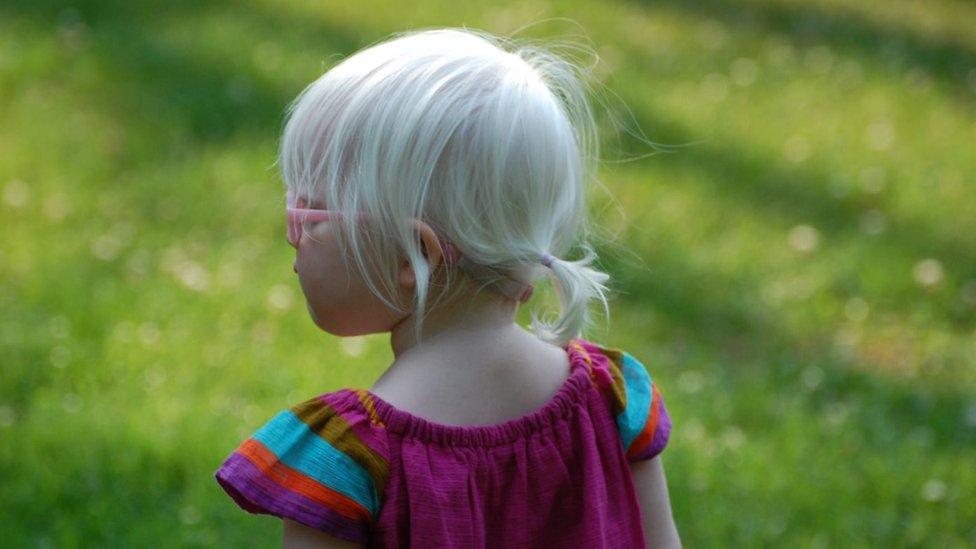
Sadie's friends liken her white hair to that of Elsa from Disney's Frozen
The little boy who noticed my daughter's hair is just one of thousands of people who have remarked on her ivory locks. It began in the delivery room as half the hospital came to "see the white-haired baby" - only the janitor suggested she might have a genetic condition. On average we hear up to five comments a day - from "wow, her hair is really white" to "did you bleach her hair? or "are you Swedish?".
Now, I am so accustomed to hearing comments I barely register them, but then, as a new mother, those remarks emphasized my concerns for her future.
A few years later and strangers began likening Sadie to Elsa and it was as if this ubiquitous Disney character somehow normalised my daughter's difference.
For now, my daughter is a Frozen fan, so this works and gives people a positive hook to hang their comments on, although I do worry when Elsa is jettisoned in favour of other, new, characters.
Traditionally however, Hollywood has not been so kind. Characters who resembled people with albinism have been the villain, an evil other who is frightening and strange. Films like The Matrix Reloaded with Keanu Reeves and TV series Doctor Who have all used evil or strange "albino" tropes, but this is just one strand of mythology that surrounds this condition.
Sadie was born when I was studying for my PhD in folklore at Memorial University, Newfoundland and I found myself drifting away to research albinism and other cases of human differences in folklore.

What is Albinism?
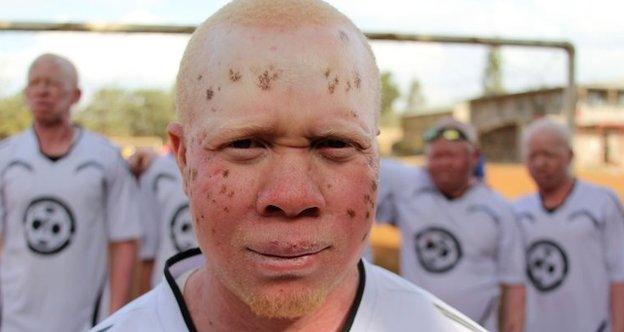
Genetically inherited group of conditions which results in a reduction or complete lack of pigment (colour) in the skin, hair and eyes
Can result in pale skin which burns easily in the sun, virtually white hair, very severe short-sight and a severe sensitivity to light
Source: Albinism Fellowship, external

I discovered that among the indigenous people of Panama, the Kuna, those with albinism were revered, tasked with defending the moon from a hungry dragon and earning them the poetic moniker "children of the moon," but other reports suggest they were an ostracized group and not permitted to inter-marry.
During the 1950s in England an article appeared in the British Medical Journal spawning the rumour that Noah, of the Bible, was the first recorded case of albinism.
A version of Noah's birth had been discovered on scrolls in a cave east of Jerusalem and prompted English ophthalmologist, Arnold Sorsby, to draw parallels between Noah and a baby born with albinism.
The document described the child as having flesh as white as snow, hair as white as wool and eyes that illuminated the room. Sorsby's article was done in jest but its impact was long-lasting. The North American albinism group that I belong to is called the National Organization of Albinism and Hypopigmentation—that's NOAH for short.
In North America there are contemporary legends about colonies of people with albinism who lived on the fringes of society. These were exaggerations or simply untrue, although in one case I traced a legend back to the Pittsleys, a Massachusetts family with a high rate of albinism who lived at the turn of the last century.
Newspaper articles from the time suggest they were part of a clan of 200 and that they lived in the "lonely part of the woods or out of the way end of a township." The principal group changes - people with mental illness, people with dwarfism or whatever difference is currently taking hold - but the telltale signs are the same. They live cloistered together and away from society in a rural, somewhat deserted space on the edge of town.
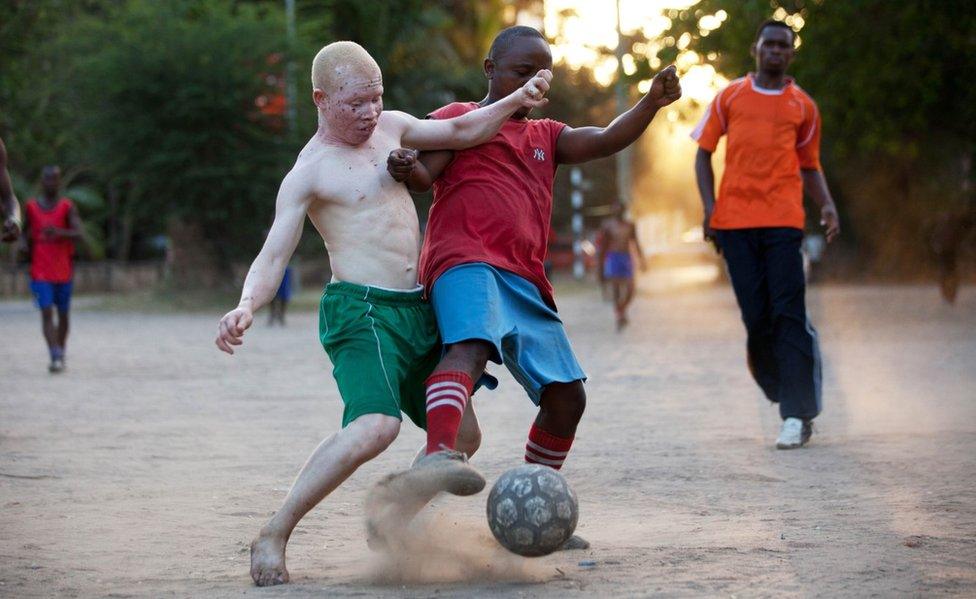
Despite the troubles in east Africa it is where Tanzania's Albino United football club is based
Today, 100 years later, locals refer to the hamlet where the Pittsleys once lived as Pink-Eye Village. I imagine this refers to the rumour that people with albinism have red eyes which is not exactly true. Most have light blue, hazel or violet irises, but certain lighting and a camera's flash can make them appear red.
While these mythologies can be psychologically cruel, there remain dangerous beliefs about people with albinism in Tanzania and other parts of East Africa. In some areas body parts are used by witch doctors in potions that purportedly bring good luck in health, love and business. The witch doctor's henchmen prey on the most vulnerable - often women and children - as part of a disturbing practice rooted in cultural beliefs that people with albinism are not human.
The potions created are outrageously expensive and available only to wealthy, powerful members of society, like businesspeople and politicians, making life particularly dangerous during an election period.
I travelled to Tanzania to learn more about these heinous human rights crimes. While much of this research broke my heart, the people I met were survivors, not victims. They were activists, journalists, and athletes and they were all standing up to this practice and working tirelessly for change.
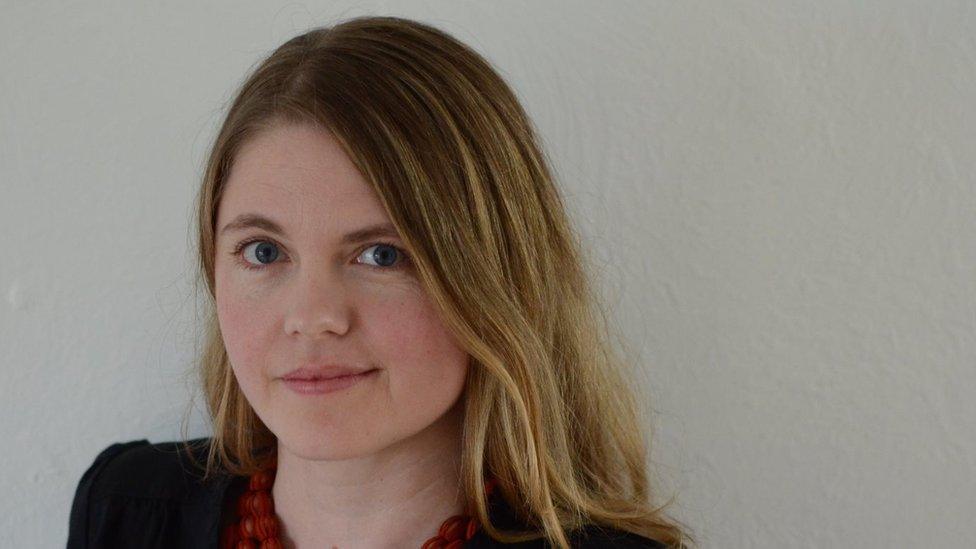
Emily Urquhart
Why, you might wonder, would a mother seek out these kinds of tales? I'm a folklorist, and I study the stories people tell to explain their worlds. Tales centred on human differences tend to be born of fear and dissecting them seems to help strip them of their power.
At first I took some comfort in the more benign magic stories. But, Peter Ash, the founder and director of the Canada-Tanzania albinism advocacy group Under The Same Sun, who has albinism, explained it to me this way: "The same culture that can elevate me to a god can turn me into a demon." The belief that people with albinism are magical, whether good or bad, suggests they are different from the rest of the population.
I can assure you they are not different. My daughter is very much a five-year-old girl - she prefers pink, won't eat brussels sprouts, and acts up if she feels her baby brother is getting too much attention.
She knows she has albinism and can advocate for herself when she's unable to see a picture book or the school's chalk board. She doesn't know about the cultural beliefs surrounding her genetic condition, but when she encounters these stories I'll be prepared to dispel and explain.
For now, however, we'll stick with Frozen.
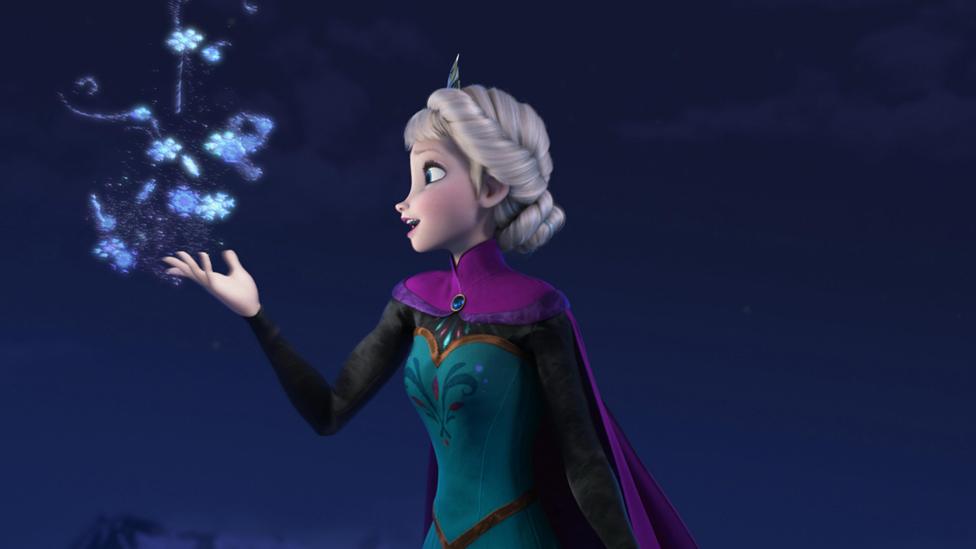
- Published3 April 2014
